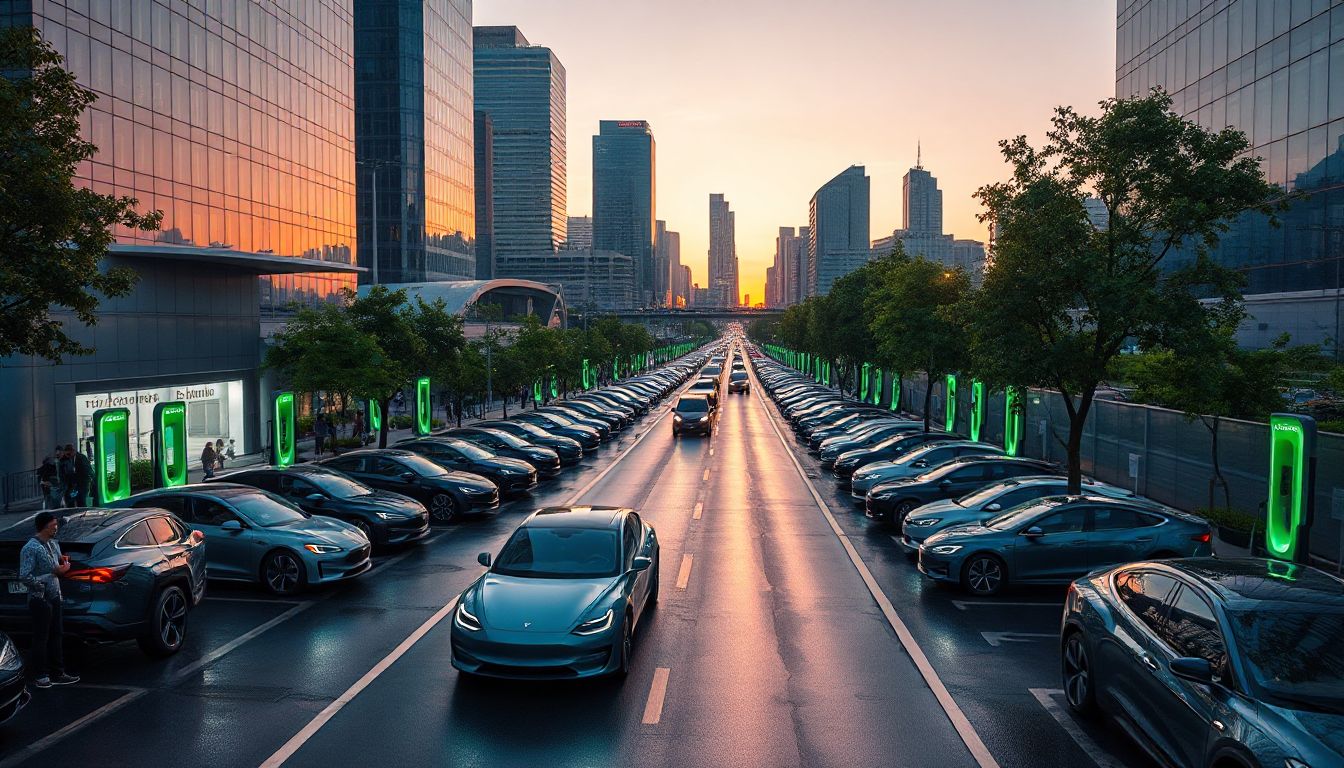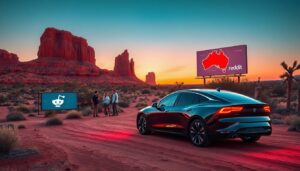Introduction
Electric cars are changing how we get around. They are becoming more popular because they help keep our planet cleaner. Unlike old-school cars that burn gas and pollute the air, electric vehicles (EVs) run on batteries. This shift is happening fast, driven by what people want and what governments are doing. As more EVs hit roads worldwide, they promise a greener future. Understanding this change means looking at how countries are adopting this new tech and what it means for us all.
The Global Landscape of Electric Cars
Market growth and current statistics
Electric cars are booming around the world. Last year, EV sales reached over 10 million units globally, making up about 14% of all new vehicle sales. Countries like China, the US, and parts of Europe lead the way. China alone produces nearly half of all EVs and has built the most extensive charging network. Major automakers, like Tesla, Volkswagen, and Nissan, are now turning out more electric models each year. They’re competing to make EVs better, cheaper, and more appealing.
Regional differences and key players
North America: Tesla is the biggest name here, with many new startups popping up. General Motors is also pushing electric pickups and SUVs.
Europe: Car brands like Volkswagen, Renault, and Nissan are big players. Governments in Europe give lots of support through policies and incentives.
Asia: China leads the world in both EV sales and manufacturing. The country’s focus on electric mobility is unmatched, with many local brands and government support driving growth.
Factors influencing adoption worldwide
Many factors push EV adoption higher. Governments offer perks like tax breaks and stricter rules on pollution. People are more aware of climate issues and want cleaner transportation. Technology keeps improving, lowering prices and extending how far EVs can go. As costs fall, more families can afford electric cars, making it easier to choose clean over traditional vehicles.
Technology and Innovation in Electric Vehicles
Battery technology advancements
Batteries power electric cars, and they keep getting better. Lithium-ion batteries are most common now but are slowly being replaced by solid-state batteries that could last longer and charge faster. Recent improvements mean drivers can now go over 300 miles on a single charge. Faster charging times mean less waiting at stations, making EVs more practical for everyday use. As batteries improve, cars become more affordable without sacrificing range or safety.
Charging infrastructure development
Charging stations are spreading out, making electric driving easier everywhere. Three main types of chargers exist:
Level 1: Ideal for home use, slow charging.
Level 2: Faster, used at public stations or garages.
DC fast chargers: Super quick, can recharge an EV in around 30 minutes.
Many cities are expanding their networks, especially in densely populated areas. Wireless charging and ultra-fast chargers are on the horizon, promising even more convenience. Imagine pulling up to a gas station that charges your car without plugging in!
Electric drivetrain and vehicle design innovations
Designing electric cars is all about making them lightweight and aerodynamic. Manufacturers are using new materials to cut weight and improve efficiency. Many new models also feature smart tech, like driver-assist features and autonomous driving. These innovations don’t just make EVs safer—they help them use less energy and go further on a charge.
Environmental and Economic Impacts
Reducing greenhouse gas emissions
Switching to EVs cuts pollution significantly. Studies show EVs emit up to 60% less greenhouse gases than gas cars. When powered by renewable energy, their impact is even smaller. This helps countries reach climate goals and slows down climate change. Picture a future where cities breathe easier, thanks to cleaner transportation.
Economic benefits and challenges
Electric cars create jobs—factory work, charging station installation, and battery recycling need people. Plus, EV ownership costs less over time. You save money on fuel and maintenance, because electric motors have fewer moving parts. But there are hurdles: raw materials for batteries are limited, and recycling batteries remains a challenge. Still, many say the economic benefits outweigh the problems.
Energy sources and grid integration
Using renewable energy for charging makes EVs even greener. Solar and wind power can supply the electricity, reducing reliance on coal or gas. Smart grids enable two-way energy flow—cars send power back to the grid when needed. Governments are promoting policies to use clean energy with EVs, making the entire system more sustainable.
Challenges and Barriers to Global Adoption
Infrastructure gaps and accessibility
Charging stations are unevenly spread. Cities have plenty, but rural areas often lack them. Without enough chargers, many drivers worry about running out of power—this is called “range anxiety.” Expanding infrastructure is vital to making EVs accessible everywhere.
Cost and affordability
While EV prices are dropping, they can still cost more than gas-powered cars upfront. Government incentives help reduce this gap, but some consumers still hesitate. Making EVs cheaper and more appealing is key to wide adoption.
Consumer perceptions and technological limitations
Many people fear EVs won’t go far enough or take too long to charge. Battery lifespan is another concern. Manufacturers are working to clear up these misconceptions with education and better tech, but changing minds takes time.
Future Outlook and Trends
Predictions for global EV adoption
Experts predict EVs will make up over 30% of all cars sold by 2030. Countries are setting ambitious goals, like banning new gas vehicle sales by 2040. Policies and innovation will drive rapid growth, making EVs part of everyday life.
Emerging technologies
Solid-state batteries could double the range and cut costs. Vehicle-to-grid technology allows EVs to give back energy to the power grid. Self-driving and connected cars will make EVs even smarter and safer, shaping how we travel.
Strategic recommendations
Governments: Create clear policies, improve charging access, and promote renewable energy use.
Manufacturers: Focus on cutting costs, improving battery life, and building cleaner cars.
Consumers: Consider early adoption, benefit from incentives, and stay informed about new tech.
Conclusion
Electric cars are transforming how we move. They’re making transportation cleaner, safer, and more affordable. With ongoing tech improvements and strong policies, EVs will become the norm faster than ever. Embracing this change is vital for a sustainable future. We all have a part to play in driving toward cleaner, smarter mobility. The road ahead is bright—let’s keep moving forward.




